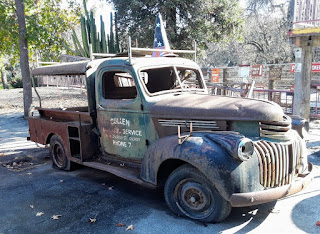Heinrich Alfred Kreiser is better known in this part of California as Henry Miller the Cattle King. His main stomping grounds were the sprawling acres of his Bloomfield Ranch just south of Gilroy, CA, just up the road from San Juan Bautista. Kreiser assumed the name Henry Miller when he bought a non-transferable train ticket from that gentleman in 1850 and headed west for the California Gold Rush. Later, he legally changed his name to Miller.
An immigrant butcher by trade originally from Wurtemburg, Germany, Miller started a meat shop in San Francisco, purchasing cattle and land with his profits. With his partner Charles Lux, he eventually worked hard enough and smart enough to own more than a million acres and over one million head of cattle. Hence the nickname "Cattle King."
Miller built a summer home up in the redwoods west of Gilroy. After his death in 1916, the estate was abandoned. The remains of that home and the surrounding grounds became part of Mt. Madonna County Park in 1953. Today you can walk through what is left of the site surrounded by a beautiful forest of redwoods, oaks, and madrones. That, among other things, is what I did yesterday.
I love stone work, so I spent about an hour checking out the site.
A short distance from the site is a fenced enclosure that houses a small population of White Fallow Deer. They are simultaneously beautiful and creepy if you ask me, like paranormal deer that regularly see the ghost of Henry Miller maybe. They live in this huge, well-protected pen because of the park's location smack dab in the middle of mountain lion territory. That buck? He lives alone most of the time. Otherwise there would be a lot more of these weird albino ghost-deer critters.
I liked visiting the ruins and the deer, but as usual, what I liked the most was the ever-enchanting woodsy woods woodsy. My guess is that's what Henry liked, too.
Peace, Love, and Redwoods,
Jim










































